I tried 7 things to be a more responsible traveler. 6 worked great, but there's one I'll skip next time.
Joey Hadden

- To be a more responsible traveler, I tried seven things to reduce my carbon footprint.
- I followed experts' advice to take trains, stay in eco-friendly lodging, and book longer trips.
- Most worked well, but I'll never again travel in a shared sleeper cabin on an overnight train.
Over the past year and a half, I traveled more than I ever had in my life.

When I was growing up, vacation always meant visiting my cousins in other states.
I didn't travel for myself until college, when I spent all the money I made working in a photo lab on camping road trips that I took around the Southwest with my buddies. That was the first time I felt like my travels were about the place I was visiting, and I grew more curious about exploring other states and countries.
That curiosity led me to my current job — a travel reporter at Insider.
Over the past year and a half in this role, I've spent more than 100 hours on trains across six countries, sailed on the largest cruise ship in the world, and learned about all the decision-making that comes with planning a spectacular trip.
But traveling frequently has also motivated me to think about how to get around the world sustainably. So I tried seven ways to lower my carbon footprint.
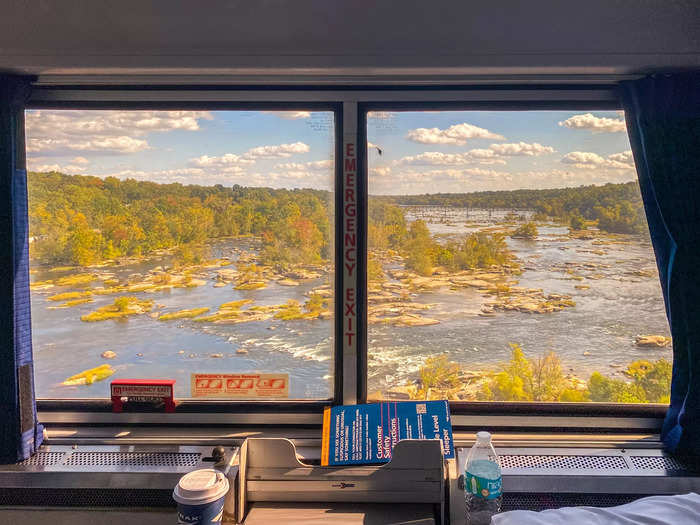
I love to travel, but I know it can be harmful to the environment. Justin Francis, a cofounder and the CEO of Responsible Travel, a UK travel company that evaluates trips and vacation providers, previously told Insider that travel could be helpful or harmful to the environment; it all depends on how you do it.
"Tourism creates local jobs and can improve lives," Francis said. "On the flip side, overtourism reduces local quality of life and affordable housing. It contributes enormously to crucial conservation work — but irresponsible development risks decimating nature."
Francis said he believed it's possible to travel "in a way that not only reduces harm but actively maximizes the benefits, for both planet and people."
Similarly, Paloma Zapata, the CEO of Sustainable Travel International, told Insider that traveling sustainably was all about making intentional choices to serve your destination and planet well.
With this guidance in mind, I took seven actions to lower my negative effect on the environment while traveling that were recommended by six sustainable-travel experts who previously spoke with Insider.
Here's a closer look at everything I tried, most of which I'd do again.
Based on experts' advice, for my latest trip, I chose a destination that embraced sustainability and the outdoors — the Great Smoky Mountains in Tennessee. I'd gladly do it again.
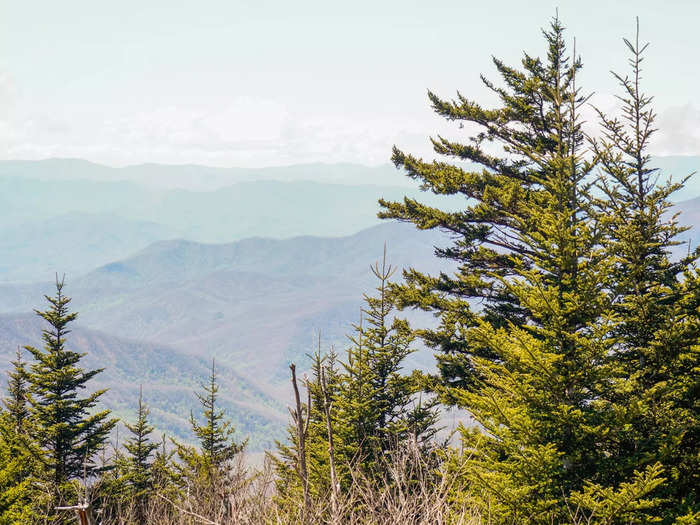
When it comes to deciding where to travel, Jessica Blotter, the CEO and a cofounder of the public-benefit corporation Kind Traveler, told Insider she looked for destinations with tourism boards that have a dedicated sustainable-travel section on their website. She avoids places "where access to nature and the outdoors is limited," she added.
In April, I followed this advice when I wanted to plan a trip and landed on the Great Smoky Mountains, a mountain range in a national park split between Tennessee and North Carolina.
I selected this destination not only because of its vast access to more than 800 miles of the Southern Appalachian Mountains, according to the National Park Service, but also because I saw that the Great Smoky Mountains were part of the Climate Friendly Parks program.
The program is "a network of parks nationwide that are putting climate-friendly behavior at the forefront of sustainability planning," says the Great Smoky Mountains action plan by the NPS that details the park's sustainability practices.
The plan also says the park aims to teach visitors about sustainability practices by including information about the climate crisis and mitigation in brochures, public facilities around the park — which I spotted during my trip — and park-led activities like guided hikes.
Compared with other national parks I've visited, I was surprised by how clean Great Smoky Mountains National Park was. I didn't see litter, which made me think that the park's emphasis on sustainability education was working.
Hiking without a candy wrapper in sight also made me feel like I was truly getting away from my urban lifestyle. And that takeaway made the trip worth it for me. Ultimately, I felt closer to nature, which is rare since I live in New York City, and I felt good visiting a place that I knew was actively working to preserve the surrounding environment.
Moving forward, I'll be sure to continue looking out for sustainable destinations to visit.
During the same trip, I committed to spending all five days in one area. Experts say this is more sustainable than hopping from one destination to another. I also thought it helped me get to know the place I was visiting more deeply.

In the past, I've packed in as many destinations as possible in a single trip, from a two-week adventure to four European countries to a weeklong tour of four Canadian cities. During these trips, I moved every day or so and felt I didn't have enough time in each place to get a good feel for it.
But according to Francis, it's more sustainable to visit fewer destinations for a longer period of time to decrease carbon emissions that come from flying.
"Fewer but longer trips mean fewer air miles, more money in local hands, and you'll have a more relaxing trip, too," Francis said. "If you can, keep shorter trips close to home or travel by land or sea."
He added that these modes of travel could be adventures themselves and allow you to "see so much more of a destination."
Additionally, aviation made up more than 2% of global energy-related carbon emissions in 2021, according to the International Energy Agency. And 80% of a trip's carbon footprint typically comes from the flights, National Geographic reported.
So when I planned my five-day trip to Tennessee, I decided to stay near the national park for the entire time, rather than add on nearby destinations such as Nashville.
I not only was glad to help support the environment in a beautiful place like a national park but also thought spending all my time in one area helped me get to know it much better than when I planned multiple one-night stays in Canada and Europe.
By the end of the trip, I was glad I didn't go to Nashville. I left Tennessee feeling like I got a full experience at the Great Smoky Mountains. Plus, following the same advice, I knew I could always plan another trip just for Nashville and would get a better sense of the city than if I spent one day there during this trip.
Experts recommend packing as lightly as possible to lighten the load on your transportation vessel. I packed for my past few trips with just a backpack and found it also made it easier to keep track of my belongings.
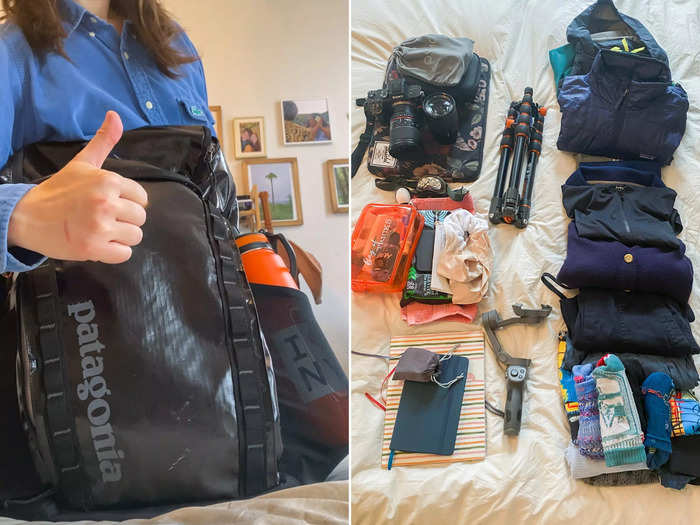
When preparing for a trip, packing lighter is more sustainable, experts agreed.
"The more weight an aircraft carries, the more fuel it burns; the lighter the load, the less polluting," Francis previously told Insider. "So pack as light as you reasonably can. If you avoid the hassle of checking a bag, that's a bonus."
For example, according to FiveThirtyEight, Southwest's fuel costs increase by more than $1 million a year if every passenger carries a cellphone and $21 million if everyone carries a laptop.
I've taken this to heart, and for my past three trips, I traveled with just a backpack. I've found that the sustainable practice is more efficient not only for the environment but also for me personally. The load on my back is lighter on me than a full suitcase would be, and it's also lighter on every flight I take, reducing the amount of fuel needed to get to my destination.
Louise Miller, an executive director of the international nonprofit Center for Responsible Travel, added that by packing fewer items and using a carry-on, you'd get through security faster and avoid the hassle of checking a bag, which I think is also a major incentive to leave behind what you don't need.
When it comes to transportation, experts told me that traveling by train was more sustainable than flying. I also think it's often a better experience.

How you get to your destination is another important consideration when trying to travel sustainably, experts told me.
In the US, Amtrak has reported that taking trains over flights reduces a traveler's carbon emissions by 73%. In Europe, Eurail has reported that traveling by train contributes between 66% and 75% less carbon than driving or flying.
Besides biking and walking, trains are typically one of the most sustainable ways to travel, Zapata of Sustainable Travel International said. If your destination is accessible by train, consider that.
Since learning this, I've been making an active effort to follow this advice and focus on train travel. I've spent more than 100 hours and 3,000 miles traveling by train in six countries, from 30-hour rides on Amtrak sleeper trains up and down the East Coast and 12-hour overnight rides across Germany and Austria to long day trips around Italy and Canada.
In addition to being a sustainable mode of transportation, traveling by train has given me unparalleled views of the world, with landscapes changing every second. And being stuck on a train for long periods of time forces me to sit back and do nothing, which is something I don't often prioritize in my daily life.
Overall, I've found that taking trains makes my trip feel more like the journey is part of the destination.
So I know I'll keep traveling by train whenever possible, especially since it lowers my carbon footprint.
When traveling by train isn't an option, I always book nonstop flights in economy, which is more sustainable than premium cabins or flights with layovers, experts say.
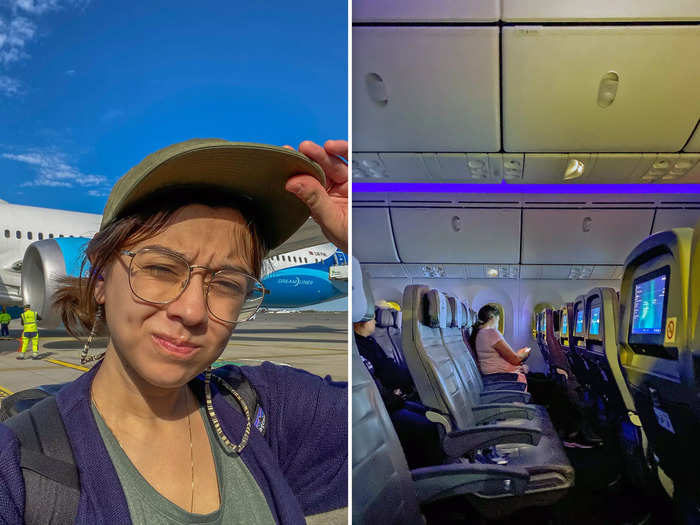
As noted by National Geographic, flying will likely be the most unsustainable aspect of your trip. But some flight bookings are more sustainable than others.
The Independent reported takeoff and landing made up more than 25% of a flight's carbon emissions, which means trips with connecting flights are more taxing on the environment.
"When booking long-distance plane travel, always choose a direct flight with no layovers," Blotter of Kind Traveler said.
"Direct flights use less carbon dioxide than connecting flights," she said. Flying economy, she added, maximizes the number of people one flight can carry because the seats take up less space.
"The average business-class seat can be replaced by three economy seats, which weigh much less," Francis said.
Before I even thought about making sustainable travel a priority, I still always tried to book nonstop flights whenever possible since layovers added more variables to my travel.
I've also always flown economy because it's the most affordable option for air travel. So learning that these flight bookings are more sustainable than alternatives didn't change the way I traveled, but I do feel more motivated to search for these flights moving forward when train travel is not possible.
Experts recommend finding accommodations that embrace sustainability. While they can be hard to find, I think it's worth it.
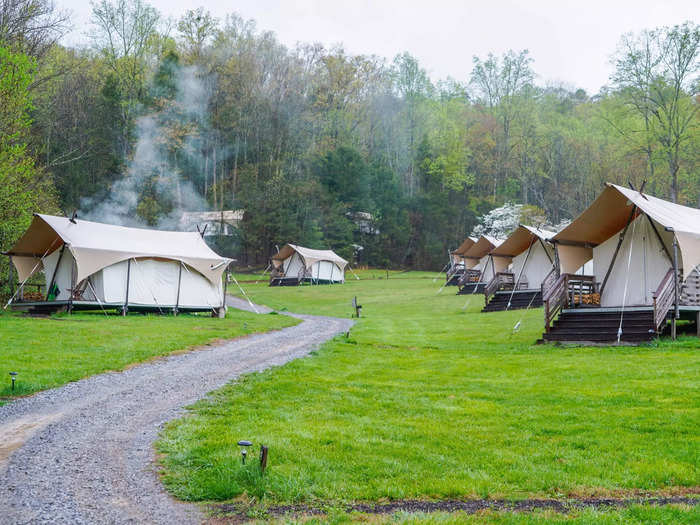
Plenty of hotels have eco-friendly branding, so experts agree finding accommodations that truly contribute to a destination's sustainability can be tricky, but I've found it's worthwhile.
When researching accommodations, look for specifics beyond "eco-friendly" and no plastic straws, Miller of the Center for Responsible Travel previously told Insider.
"Hotels that are truly eco-friendly should have a sustainability statement and clearly stated initiatives visible on their website," Blotter said. "Choosing a destination that embraces sustainable and regenerative travel creates an opportunity to vote with your dollars and support destinations committed to this path."
Likewise, Zapata recommended looking for specific initiatives regarding sustainability on hotel websites. And if you end up booking with them, look for evidence that their accommodation is following the claims it makes.
I did just that ahead of my trip to the Great Smoky Mountains. Before booking Under Canvas — a glamping resort with a community feel — I found that the resort's website had a section dedicated to sustainability.
From there, I learned that Under Canvas partnered with The Nature Conservancy, a global environmental nonprofit that works to conserve land and water, helps to fund conservation, and raises awareness through education, volunteer efforts, and donation programs.
I felt good seeing these efforts and booked a one-night stay.
During my stay, I noticed several of these practices in place to reduce energy consumption, from pull-chain showers that saved water by running only while the chain was down to wood-fired ovens that campers lit themselves to warm their tents instead of electricity. I also noticed dim lighting, which is meant to decrease light pollution, according to the company's website.
While I selected Under Canvas because of its sustainability efforts, I found I enjoyed the eco-friendly practices of the resort. Making my own fire to heat my tent made me feel more connected to nature, and I'd definitely stay in a place like this again.
While following experts' tips on sustainable travel worked for me in most cases, there was one thing I tried that I wouldn't repeat. I won't ever again travel in a shared space on an overnight sleeper train.
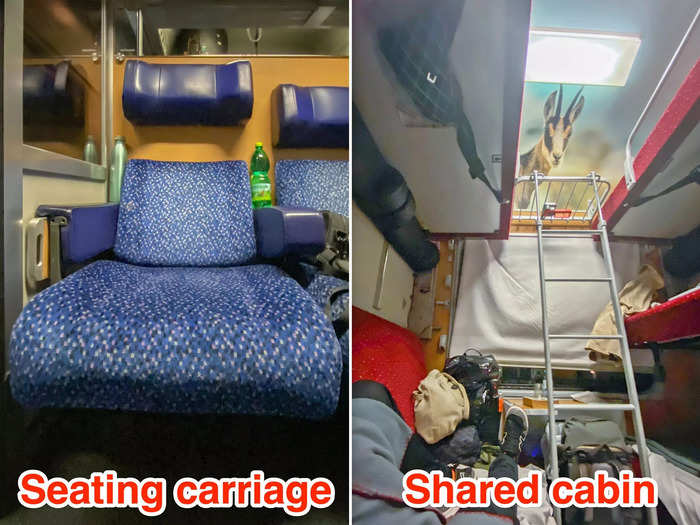
"Along the same logic of how flying economy has a lower carbon footprint than first class, traveling in shared cabins on sleeper trains is more sustainable than booking a private cabin because it maximizes the number of passengers each train can carry, optimizing the efficiency of the train," Blotter said.
With Blotter's advice in mind, when I planned my train trip through Europe, I decided to book only shared spaces instead of private cabins, as I had in the past on Amtrak.
I spent two nights on OBB Nightjet sleeper trains. For my first ride, from Berlin to Vienna, I booked a regular seat in an enclosed space with six seats facing each other. It was called a seating carriage. For my second ride, from Vienna to Venice, Italy, I booked a bunk in a shared cabin.
I thought both rides were too cramped and uncomfortable to get a good night's rest and lacked any privacy. I was exhausted when I arrived at my destinations for long days of exploring.
While I'm glad I did something positive to support the environment, I'd have to pass on making the choice again. Fortunately, Blotter said she encouraged travelers booking private cabins for comfort or security reasons to do so over plane travel because traveling by train is still more sustainable than flying.
So in the future, I'll still travel by overnight train to reduce my carbon footprint, but I'll opt for a private cabin instead of a shared space.
Ultimately, I was surprised by how much I enjoyed making my travel more sustainable.
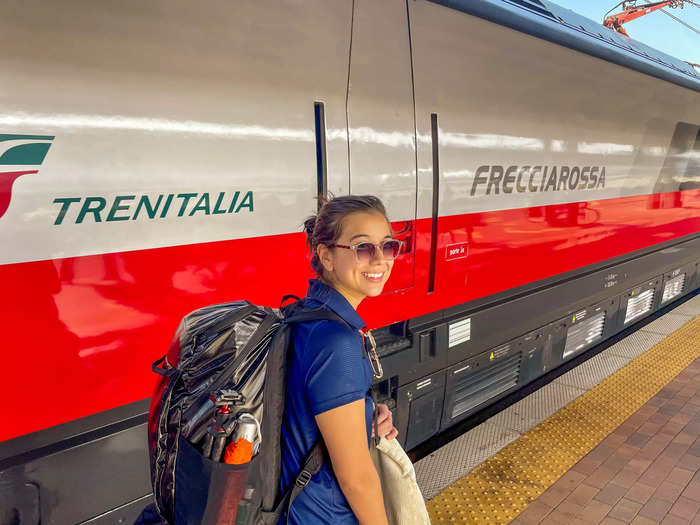
Spending five days in the mountains of Tennessee gave me enough time to immerse myself in nature, while traveling by train gave me a chance to slow my pace.
More importantly, I know that the choices I made while planning, booking, and experiencing my trips helped me decrease my harmful influence on the planet.
In my future travels, you'll catch me spending more time in my destinations, booking private sleeper trains, packing light, and choosing the most sustainable accommodations I can find.
I think it not only makes for more memorable experiences but also ensures I'm being a more responsible traveler — plus, you can't beat that railroad view.
In case you missed it, watch a replay of Insider's One Planet virtual event with the activist and artist Elijah McKenzie-Jackson.
Popular Right Now
Popular Keywords
Advertisement